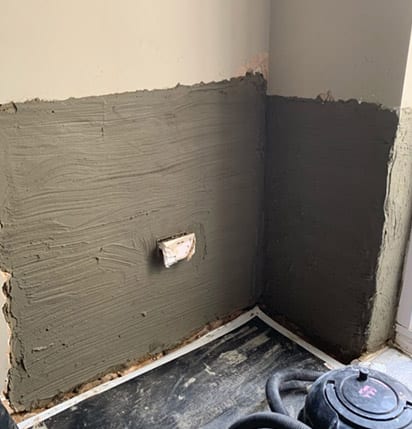
Penetrating damp is damp which has entered the property from the exterior or from leaking plumbing. This also known as water ingress.
If water is entering a wall, floor or ceiling at a faster rate than it can dry out or drain, the structure will saturate with water, which leads to deep, damaging damp.
Water which penetrates from the ground is even more dangerous as it contains hygroscopic salts, which attract and hold water molecules.
If a wall becomes contaminated with hygroscopic salts, it starts a vicious cycle of salts attracting water, which contains more salts, which then attracts more water.
Penetrating damp can be dangerous
Penetrating damp is more than just an eyesore; it can lead to mould and rot which can cause severe damage to the structure, sometimes to the point that it’s no longer safe to be inside.
Huge chunks of plaster can suddenly crumble off a wall or ceiling and, if damp spreads to the timbers, it can lead to wet rot or create the ideal habitat for wood boring beetles, both of which can damage timbers to the point they need to be entirely replaced. So its much easier to get proper damp proofing in pace so you don’t have to deal with the consequences.
Mould has also been proven to be linked to a variety of medical conditions and can worsen symptoms in people who are asthmatic, have respiratory conditions or weakened immune systems.





